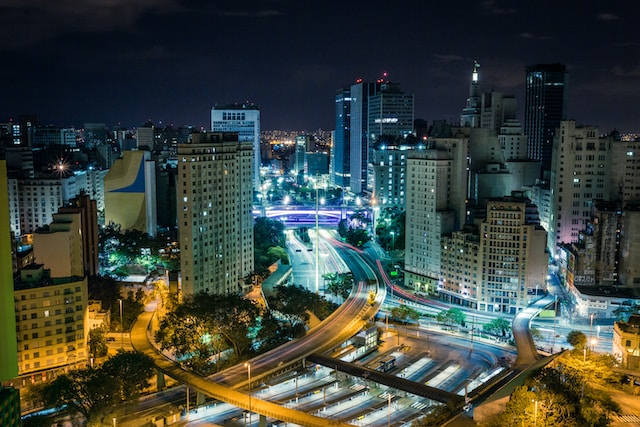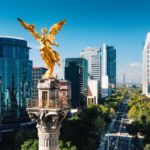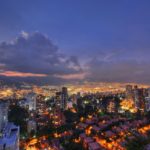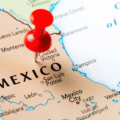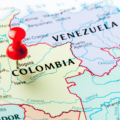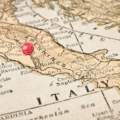A Digital Nomad Guide to Living in São Paulo
Have you ever wondered what it’s like to work from one of the most energetic cities in the world? As a full-time digital nomad, I call myself “Jeff the chilled nomad,” and I’ve set up my laptop in countless cities, but São Paulo has a buzz that’s entirely its own. On my first visit years ago, it felt like a concrete jungle, but my return in 2025 has shown me a city that’s fully embracing the remote work revolution.
Welcome to the massive, sprawling metropolis of São Paulo, Brazil’s true melting pot of culture, technology, and business. If you’re a digital nomad looking for the perfect mix of urban adventure and a solid work-life balance, you’ve landed in the right place. In this guide, I’ll walk you through everything I’ve learned about living and working here, from the best neighborhoods to my favorite spots for a great coffee and even better Wi-Fi.
Key Takeaways
- São Paulo is a fantastic destination for digital nomads, thanks to its deep cultural scene, a tech industry that’s absolutely booming, and a surprisingly affordable cost of living.
- I found a ton of diverse neighbourhoods perfect for digital nomads, each with its own vibe, from the artsy Vila Madalena to the trendy Pinheiros and the upscale Jardins. Other great options I explored include Vila Mariana, Moema, and Consolação.
- The city is packed with excellent coworking spaces that offer everything you need, like 24/7 access and high-speed internet, at prices that won’t break the bank.
- Based on my 2025 spending, a digital nomad can live comfortably in São Paulo for around $1,000 to $1,500 a month, depending on your lifestyle.
Why I Think São Paulo Is a Top Destination For Digital Nomads
São Paulo is quickly becoming a favorite for digital nomads, and for good reason. The combination of its rich culture, a booming tech scene, and an affordable cost of living makes it a hard-to-beat package.
Cultural Richness
São Paulo has a cultural energy that I find incredibly inspiring. It’s the heart of Brazil’s art and cultural scene, which means there’s always something new to see or do. The neighborhoods are filled with eclectic art galleries, amazing food, and colorful street festivals that seem to pop up all year round.
On my work breaks, I loved exploring places like the São Paulo Museum of Art (MASP), with its incredible collection suspended on glass easels. I also spent an afternoon at the Pinacoteca do Estado, which focuses on Brazilian art. Of course, a walk down Paulista Avenue on a Sunday when it’s closed to traffic is an experience in itself, with street performers and markets everywhere. It’s known as the country’s main cultural hub for a reason.
Booming Tech Industry
São Paulo’s tech scene is on fire right now, which makes it an exciting place for anyone working online. As Brazil’s financial capital, it’s become a major hub for innovation, with the regional headquarters for giants like Google, Meta, and Microsoft all based here. The city is home to 15 unicorn companies and saw its startup ecosystem grow by over 15% in the last year alone, according to StartupBlink.
I made some great connections at networking events organized by groups like Startup Grind São Paulo. It’s a fantastic way to meet other professionals and get a feel for the local market. Plus, you can find innovation hubs like Google for Startups Campus, which actively nurtures new ventures.
Affordable Cost Of Living
One of the biggest draws for me is the affordable cost of living, especially when you compare it to other major world cities. My rent for a nice one-bedroom apartment was significantly less than what I would pay in a city like Rio de Janeiro.
Eating out is also a great deal. You can find incredible Brazilian food at local restaurants without spending much at all. Public transport, like the metro and buses, is efficient and cheap, which makes getting around the city super easy on a budget.
Cost of living in Sao Paulo
The cost of living in São Paulo can vary a lot based on your lifestyle, but I found it to be pretty reasonable for a city of its size. Here’s a rough breakdown of what you can expect to spend in 2025.
- Rent: This will be your biggest expense. A one-bedroom apartment in a good, central neighborhood like Pinheiros or Vila Madalena typically costs between $500 and $950 per month. For finding a place, I had the most luck using the app QuintoAndar, which is what most locals use.
- Food: I love to cook, and groceries are quite affordable, running about $200 to $300 a month. Eating out can be cheap too, especially if you go for a “prato feito” (a set lunch plate) which you can find for around R$30 (about $6 USD). A three-course meal at a mid-range spot will set you back about R$100-150 ($20-30 USD).
- Transportation: Public transit is the way to go. I got a “Bilhete Único” card, which you can top up for the metro and bus systems. A monthly pass costs around R$200 (about $40 USD). Ride-hailing services like Uber are also everywhere and are quite affordable for shorter trips.
- Entertainment: There’s so much to do here. A movie ticket is about R$30 ($6 USD), but many of the best things, like hanging out in Ibirapuera Park or exploring street markets, are completely free.
Overall, I found that you can live a very comfortable life here on a budget. According to Nomad List, a single person can expect to spend around $1,045 per month. Just remember to factor in your own spending habits!
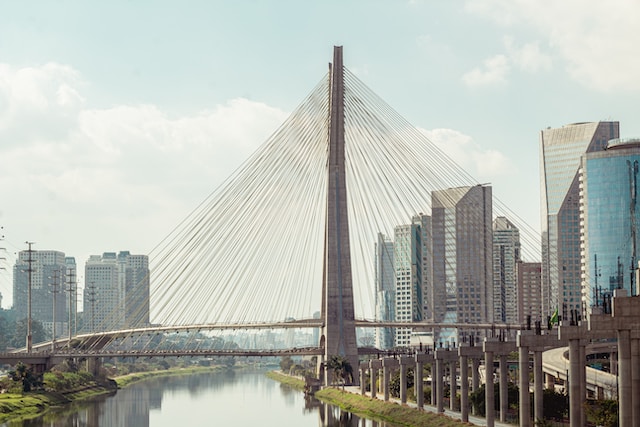
Accommodation Options For Digital Nomads In São Paulo – best places to live
As a digital nomad, you have a ton of great accommodation options in São Paulo. My personal favorite neighborhoods were Vila Madalena, Pinheiros, and Jardins, but each area has its own unique charm.
Best Neighbourhoods in Sao Paulo
São Paulo has a neighborhood for every type of nomad. Here are a few of my top recommendations from my time here in 2025:
- Vila Madalena – This is the bohemian heart of the city, famous for its vibrant street art, especially at Beco do Batman (Batman’s Alley). It’s packed with cool cafes, indie galleries, and a buzzing nightlife scene.
- Pinheiros – Right next to Vila Madalena, Pinheiros is a bit more polished but just as trendy. It’s a foodie paradise with some of the city’s best restaurants and craft beer bars.
- Jardins – If you’re looking for something more upscale, Jardins is perfect. The streets are lined with trees, high-end boutiques, and fine dining restaurants. It felt very safe and quiet.
- Vila Mariana – This area has a younger, more student-focused vibe since it’s close to several universities. It’s full of trendy cafes and has great access to Ibirapuera Park.
- Moema – I really liked Moema for its laid-back atmosphere. It’s known for its green spaces and is a bit quieter, making it a great place to focus.
- Consolação – This is a really central neighborhood with a cool, artistic feel. You’ll find lots of cool bars, galleries, and shops here.
No matter which neighborhood you choose, you’ll find everything you need to feel right at home. I found that each of these areas had great access to cafes, markets, and transit.
Types Of Accommodation Available
São Paulo has something for every budget and style. Here are the main types of accommodation I came across:
- Hostels: Great for meeting other travelers and keeping costs low. I stayed at Selina Madalena for a bit, which has a fantastic coworking space right inside the hostel.
- Apartments: Renting an apartment is my preferred way to stay long-term. I used apps like QuintoAndar and Zap Imóveis to find furnished places. Expect to pay a “condomínio” fee, which covers building maintenance and security.
- Shared Living Spaces: Co-living is becoming more popular. Places like Uliving offer private rooms with shared common areas, which is a great way to find an instant community.
- Furnished Housing: For longer stays, there are plenty of companies that offer fully furnished and serviced apartments, which takes all the hassle out of setting up a new place.
- Hotel Rooms/Airbnb: Of course, you can always find great deals on Airbnb or in hotels, especially if you’re only staying for a shorter period.
My biggest piece of advice is to find a place that’s close to a metro station. It makes exploring this massive city so much easier!
Average Cost Of Living In São Paulo
I tracked my expenses pretty closely during my 2025 stay, and São Paulo is definitely one of the more affordable mega-cities I’ve lived in. Here’s a quick look at what a monthly budget might look like, based on my experience and data from sites like Nomad List.
| Expense Category | Cost (USD) |
|---|---|
| Housing (1-bedroom apartment) | $500 – $950 |
| Utilities (electricity, water, internet) | $60 – $100 |
| Food (groceries) | $200 – $300 |
| Transportation (public transport pass) | $40 – $50 |
| Entertainment (eating out, events) | $150 – $250 |
| Health Insurance | $40 – $100 |
| Phone plan | $10 – $20 |
| Other personal expenses | Variable |
| Total Cost (excluding housing) | Approximately $490+ |
Keep in mind that these are just estimates. Your actual costs will depend on your personal spending habits and the neighborhood you choose to live in.
Climate/Weather
São Paulo has a humid subtropical climate, which means it has four distinct seasons. I was there in the summer, which is warm and rainy, with temperatures usually between 22 to 28 degrees Celsius (72 to 82 F). The winters are mild and much drier, with temperatures from 12 to 22 degrees Celsius (54 to 72 F).
The city is famously known as “Terra da Garoa,” or the “Land of Drizzle,” so don’t be surprised by sudden light rain, especially in the afternoons. The wettest months are definitely December through March. The air can get quite humid, especially in the summer, so staying hydrated is key.
Here are a few quick tips I picked up for handling the weather:
- In the summer, I always wore light, breathable clothing.
- In the winter, layers are your best friend, as the temperature can change throughout the day.
- Always carry a small umbrella. You never know when the “garoa” will start.
- If you’re sensitive to air pollution, you might consider wearing a mask on days when the quality is lower, though I personally didn’t find it to be a major issue.
Co-working Spaces In São Paulo
São Paulo is packed with fantastic coworking spaces perfect for digital nomads. You can find everything from global chains to smaller, local spots with a unique vibe. Most offer high-speed Wi-Fi, private offices, and meeting rooms at very reasonable prices.
Overview Of Coworking Spaces
I was really impressed by the sheer number of coworking spaces here, there are over 120 scattered across the city. Whether you want the familiar setup of a global brand or a more intimate local space, you’ll find it. Places like WeWork have a huge presence in prime areas like Avenida Paulista and Faria Lima.
I also checked out some local favorites like BlockTime Coworking and CoLab in Pinheiros, which had a great community feel. These spaces are perfect for getting work done and connecting with other remote workers and local entrepreneurs. The infrastructure is solid, with many places offering fiber internet with speeds from 100-300 Mbps.
Amenities Available
The coworking spaces in São Paulo are well-equipped to meet the needs of any digital nomad. I found that most of them offered a great range of amenities.
- High-speed Wi-Fi is standard everywhere, so you can count on a stable connection for all your video calls.
- You’ll find comfortable desks and ergonomic chairs, which my back was very grateful for.
- Meeting rooms with all the necessary tech are usually available to book by the hour.
- Most places have printing, scanning, and copying services on-site, which is super convenient.
- Many spaces offer 24/7 access, giving you the flexibility to work on your own schedule.
- Free coffee, tea, and water are a given, which is perfect for staying caffeinated and hydrated.
- I really enjoyed the networking events and workshops that many spaces organize. It’s a great way to meet people.
With these kinds of amenities, it’s easy to see why São Paulo is becoming such a hotspot for digital nomads from all over the world.
Here are some recommended places to work remotely
- WeWork: WeWork is a huge global coworking company with multiple spots all over São Paulo. I worked out of their Faria Lima 4055 location, which was modern and had all the amenities you could ask for. It’s a great choice if you want a familiar, reliable setup.
- Spaces: Spaces is another big international player. Their offices in the financial district are really impressive and offer a ton of services for members.
- Co.working: This is a Brazilian coworking company with several locations in the city. I found their spaces to be really welcoming and thoughtfully designed for productivity. They offer different membership plans to fit any budget.
- WorkCafé Santander: This was a really cool and unique concept I found. It’s a coworking space located right inside a Santander bank branch. It’s super convenient if you need to take care of any banking while you work.
- Josefin: Located in the artsy Vila Madalena neighborhood, Josefin is a coworking space with a very creative atmosphere. If you’re looking for inspiration from your surroundings, this is a great place to be.
These are just a handful of the many options available. When you’re choosing a space, I’d recommend thinking about what’s most important to you, whether it’s location, community, or specific amenities, and you’ll definitely find the perfect spot in São Paulo.
Pricing of co working spaces
The pricing for coworking spaces in São Paulo can vary a lot, but I found it to be pretty affordable overall. It really depends on the neighborhood, the amenities, and how long you plan to stay.
| Type of Coworking Space | Average Price |
|---|---|
| Day Pass | Around $10 per day |
| Hot Desk (Monthly) | $120 to $250 per month |
| Private Desk (Monthly) | Starting at $120 per month |
| Private Office (Monthly) | $350 to $800 per month |
| Meeting Room (Hourly) | $10 to $50 per hour |
These prices should give you a good starting point. My advice is to look out for discounts on long-term memberships, as many places will offer a better deal if you commit to a few months.
Best Cafes To Work From In São Paulo
Sometimes you just want to work from a cafe with a great vibe and even better coffee. São Paulo has an incredible coffee scene, and I found some amazing spots that are perfect for a few hours of work.
Recommendations And Reviews
São Paulo is a city that runs on coffee, and there’s no shortage of great cafes to work from. Here are a few of my personal favorites from my 2025 trip:
- For true coffee lovers, Coffee Lab in Vila Madalena is a must-visit. It’s more than just a cafe, it’s an experience. The coffee is exceptional, the Wi-Fi is fast, and the atmosphere is perfect for focusing.
- KOF – King of The Fork in Pinheiros is another gem. It’s a bike-themed cafe with a super cool vibe, great coffee, and delicious food. It became one of my go-to spots for a productive morning.
- I also spent a lot of time at Sofá Café, which has a few locations. It’s incredibly cozy, as the name suggests, with comfy seating, plenty of outlets, and a quiet ambiance that’s great for getting work done.
- The Biblioteca de São Paulo (São Paulo Library) is a fantastic free option. It has reliable Wi-Fi and is a beautiful, quiet space if you need to really concentrate.
- If you’re out late and need a place to work, Fran’s Café has multiple 24-hour locations with dependable Wi-Fi and plenty of snacks to keep you going.
No matter what you’re looking for, from a high-end specialty coffee experience to a simple, quiet corner, you’ll find a perfect workspace in one of São Paulo’s many cafes.
Wi-Fi Speed And Atmosphere
In this section, I’ll give you a little more detail on the Wi-Fi speed and atmosphere of some of the top cafes I worked from in São Paulo. Finding a good connection is key, and thankfully, most places here are well-equipped.
| Cafe Name | Average Wi-Fi Speed | Atmosphere |
|---|---|---|
| Coffee Lab | 20 Mbps | A bustling, educational space for serious coffee lovers. It can get busy, but the energy is creative and focused. Great outdoor patio. |
| KOF – King of The Fork | 15 Mbps | A trendy, cyclist-themed cafe with a very cool, relaxed vibe. It’s great for both solo work and casual meetings. |
| Sofá Café | 18 Mbps | Extremely cozy and quiet, designed for comfort. Perfect for long work sessions where you need to concentrate without distractions. |
| Um Coffee Co. | 25 Mbps | A modern and bright two-story cafe that’s popular with remote workers. It has a vibrant, productive atmosphere. |
All of these cafes offer free Wi-Fi for customers and have become popular spots for the digital nomad community in São Paulo. They provide not just a solid internet connection but also a great environment to be productive.
Transportation In São Paulo – transportation options
Getting around a city as massive as São Paulo can seem intimidating at first, but I found it surprisingly manageable. There are several great options, from an efficient public transit system to ride-hailing services and even bike rentals.
Public Transportation
The public transportation system here is extensive and a great way to get around. The metro is clean, reliable, and covers most of the areas you’ll want to visit. I highly recommend getting a Bilhete Único card as soon as you arrive, you can use it on the metro, trains, and buses.
One thing to keep in mind is that rush hour traffic is no joke in São Paulo. If you can, try to avoid traveling during peak morning and evening hours to save yourself from getting stuck in crowds. The city also has bike-sharing programs like Bike Sampa, which are perfect for shorter trips on a nice day.
Ride-Hailing Services
For times when you need a more direct route, ride-hailing services like Uber and 99 are available everywhere and are very affordable. I used Uber frequently, especially at night, and found it to be a safe and convenient way to get around.
You can choose from different car options depending on your needs and budget. Just be aware of the “rodízio,” which is a traffic restriction system based on license plate numbers. It can sometimes affect ride availability and pricing during certain hours on weekdays.
Bicycle Rental
If you’re like me and enjoy exploring a city on two wheels, renting a bicycle is a fantastic option in São Paulo. Here’s what I learned about the bike rental scene here:
- Bike Sampa is the main bike-sharing system, and you’ll see their orange bikes at stations all over the city. You can easily rent one with their app, and it’s a very affordable way to get around for short trips.
- Some neighborhoods are definitely more bike-friendly than others. I found that Vila Madalena and Pinheiros had better bike lanes and were great for cycling.
- On Sundays and public holidays, the city runs a program called CicloFaixa, where they close major roads to cars and open them up for cyclists. It’s an amazing way to see the city from a different perspective.
- Always be careful with traffic. While the city is improving its cycling infrastructure, it can still be pretty hectic, so wearing a helmet and staying alert is essential.
Renting a bike is a great way to get some exercise while you explore, especially on a sunny day in Ibirapuera Park!
Top Places To Eat And Drink In São Paulo
Get ready for a culinary adventure, because São Paulo is a food lover’s dream. The city’s food scene is a direct reflection of its multicultural population, with everything from traditional Brazilian dishes to world-class international cuisine. I ate so well during my time here.
Brazilian Cuisine And International Options
São Paulo’s food scene is incredibly diverse. Thanks to large immigrant communities, you can find some of the best Italian and Japanese food outside of their respective countries. Here are a few things you absolutely have to try:
- Coxinha: This is the ultimate Brazilian snack. It’s a teardrop-shaped fritter filled with shredded, seasoned chicken. You’ll find them everywhere, and they are dangerously delicious.
- Churrascarias: You can’t come to Brazil and not experience a traditional barbecue steakhouse. I went to Fogo de Chão, where they bring skewers of perfectly cooked meat to your table until you can’t possibly eat another bite.
- Feijoada: This is Brazil’s national dish, a hearty black bean stew with different kinds of pork. It’s traditionally served on Saturdays, and it’s a must-try. I had an amazing feijoada at a restaurant called Bolinha.
- Mortadella Sandwich: Head to the Mercado Municipal (Municipal Market) and get the famous mortadella sandwich. It’s a massive sandwich piled high with mortadella, and it’s an iconic São Paulo experience.
- Pizza: São Paulo is famous for its pizza, thanks to its huge Italian population. I was told it rivals pizza from Italy, and honestly, it was incredible.
- Japanese Food: The Liberdade neighborhood is the largest Japanese community outside of Japan, so the sushi and ramen here are as authentic as it gets.
- Michelin-Starred Restaurants: For a special occasion, São Paulo has several Michelin-starred restaurants. D.O.M. by Alex Atala is one of the most famous, known for its innovative use of Amazonian ingredients.
No matter what you’re in the mood for, you’ll find something amazing to eat in this city. My advice is to come hungry!
Craft Beer Scene
As a big fan of craft beer, I was thrilled to discover that São Paulo has a really innovative and exciting scene. It’s considered one of the most advanced in Latin America, and I found some amazing breweries and taprooms.
Two of my favorite spots were EAP Empório Alto de Pinheiros, which has an insane number of taps, and Cervejaria Dogma, a local brewery with some really creative and delicious beers. It’s a great way to unwind after a day of work and taste some unique local flavors.
Cultural Experiences Not To Miss In São Paulo
Beyond the food and work, São Paulo is overflowing with incredible cultural experiences. I made it a point to explore the city’s museums, parks, and landmarks, and there’s so much to see.
Museums, Galleries, And Historical Landmarks
São Paulo is a city steeped in history and art. I spent countless hours exploring its cultural institutions. Here are some of the places that I think are absolute must-sees:
- São Paulo Museum of Art (MASP) – This is the city’s most famous museum, not just for its incredible collection of European and Brazilian art, but for its unique architecture. The paintings are displayed on glass easels, making them look like they’re floating.
- Pinacoteca – This is one of the oldest art museums in the country and is housed in a beautiful historic building. It focuses on Brazilian art from the 19th century to the present.
- Afro Brasil Museum – Located inside the stunning Ibirapuera Park, this museum is dedicated to the history and cultural contributions of Afro-Brazilians. It’s a powerful and essential experience.
- Theatro Municipal – This is São Paulo’s historic opera house, and it is absolutely breathtaking. Even if you don’t see a show, it’s worth taking a guided tour to see the stunning architecture.
- Farol Santander (Banespa Building) – For one of the best views of the city, head to the top of this historic skyscraper. It’s inspired by the Empire State Building and has a cultural center and a cool cafe at the top.
- Street Art Tours – São Paulo is a world-renowned destination for street art. I took a walking tour through Vila Madalena and Beco do Batman (Batman’s Alley), and it was like walking through an open-air gallery.
There’s so much more to see, from the Football Museum for soccer fans to the Latin America Memorial. You’ll never run out of cultural sites to explore in this city.
Music And Nightlife Scene
If you’re looking for a good time after work, São Paulo’s nightlife will not disappoint. The city truly comes alive after dark, with everything from cozy neighborhood bars (botecos) to massive, high-energy clubs (baladas).
The city is also a major stop for international music tours and hosts huge festivals like Lollapalooza Brazil. But even on a regular night, you can find incredible live music venues playing everything from traditional samba to modern electronic beats. I loved grabbing a caipirinha and listening to live samba music. It’s an essential Brazilian experience.
Here are some of the best areas to experience São Paulo’s nightlife:
- Vila Madalena: This is the heart of bohemian nightlife. The streets are packed with lively bars, botecos, and people spilling out onto the sidewalks. It’s the perfect place to bar-hop and soak in the vibrant atmosphere.
- Liberdade: Known for its Japanese heritage, Liberdade also has a unique nightlife scene with traditional Japanese bars, karaoke, and some cool clubs.
- Jardim Paulistano: If you’re looking for a more upscale and sophisticated experience, this neighborhood is home to some of the city’s most luxurious bars and exclusive clubs.
- Bela Vista: This historic neighborhood, with its Italian roots, offers a great mix of traditional and modern nightlife, from old-school cantinas to trendy live music venues.
No matter what your style is, you’ll find a place to have a great night out in São Paulo.
Here are a few specific spots I really enjoyed:
- Skye Bar: Located on the rooftop of the Hotel Unique, this bar offers absolutely stunning panoramic views of the city skyline. The cocktails are fantastic, and the atmosphere is chic and lively.
- D-EDGE: If you’re into electronic music, this is the place to go. It’s a world-famous club known for its incredible sound system and futuristic design.
- Bar Brahma: For a classic São Paulo experience, head to Bar Brahma in the historic center. It’s famous for its live samba and choro music and has been a city institution for decades.
- Madame Underground: This underground club has a more alternative, goth-rock vibe and has been a staple of the city’s counter-culture scene for years.
This is just scratching the surface, of course. My best advice is to just get out there and explore!
Brazil Digital Nomad Visa
One of the best developments for people like us is that Brazil introduced a digital nomad visa in 2022, and it’s a game-changer. The visa, officially called VITEM XIV, allows you to live and work remotely in Brazil for up to one year, and you can even renew it for a second year.
Getting this visa means you can settle in without worrying about border runs or overstaying your tourist visa. It provides peace of mind and the chance to truly experience life in Brazil.
To be eligible for the Brazil digital nomad visa, here are the main things you’ll need as of my 2025 update:
- You must prove that you work remotely for a company or clients outside of Brazil.
- You need to show a minimum monthly income of at least US$1,500 OR have at least US$18,000 in your bank account.
- You must have a valid passport for your entire stay.
- You’ll need to provide a clean criminal record certificate.
- You must have private health insurance that covers you in Brazil.
The application process can be started online through the MigranteWeb platform. The processing time is usually around two to four weeks. I highly recommend looking into this visa if you plan on staying in Brazil for more than the standard 90-day tourist allowance.
Safety Tips For Digital Nomads In São Paulo
Like any massive city, it’s important to be smart about safety in São Paulo. I felt safe during my stay by taking some common-sense precautions. Being aware of your surroundings is key, especially in crowded areas.
Crime Prevention
To stay safe as a digital nomad in São Paulo, there are a few practical tips I followed. Petty crime like pickpocketing can happen, so I made it a habit to carry only what I needed for the day and left my passport and extra cards locked up at my apartment.
It’s also wise to avoid wearing flashy jewelry or walking around with expensive electronics like your phone out on the street. Phone snatching by people on motorcycles can occur, so I always tried to step into a shop or cafe if I needed to check my phone. At night, I relied on ride-hailing services like Uber to get home safely instead of walking long distances.
Recommended Areas To Stay And Avoid
Choosing the right neighborhood can make a big difference in your experience. Here are some of my personal recommendations on where to stay and a few areas to be more cautious in:
Recommended Areas to Stay:
- Pinheiros – This was one of my favorite areas. It’s trendy, has a low crime rate, and a strong community feel.
- Vila Madalena – Known for its bohemian vibe, it’s generally safe and full of life, though it can get noisy at night.
- Jardins – This is one of the most upscale and secure neighborhoods, with plenty of private security and police presence.
Areas to Be Cautious In:
- Centro (Downtown) – While it has amazing historical sites, some parts of the city center can be sketchy, especially after business hours. I’d avoid walking around here late at night.
- Favelas – It’s generally advised to avoid entering favelas unless you are with a trusted local guide or part of an organized tour.
- Public parks at night – While parks like Ibirapuera are beautiful and safe during the day, it’s best to avoid them after dark.
By sticking to the safer neighborhoods and being mindful of my surroundings, I was able to enjoy everything this incredible city has to offer without any issues.
The digital nomad community In São Paulo
One of the things I loved about São Paulo is how easy it is to connect with other digital nomads and expats. There’s a really supportive and active community here, which makes it feel like home pretty quickly.
Meetups And Events
São Paulo has a thriving digital nomad scene with lots of events happening all the time. Here are a few ways I connected with people:
- Digital Nomad Meetup São Paulo: I found this group on Meetup.com, and they host regular events where you can network and share stories with other nomads.
- Facebook Groups: Groups like “Expats in São Paulo” are super active. They are a great resource for asking questions, getting recommendations, and finding out about local events.
- Coworking Space Events: Many coworking spaces, like Impact Hub São Paulo, host workshops and social gatherings. It’s an easy way to meet people who are also working remotely.
- Startup Grind São Paulo: If you’re in the tech scene, their events are fantastic for networking with entrepreneurs and local professionals.
- Language Exchanges: I went to a few English-Portuguese language exchange events. It was a fun, informal way to practice my Portuguese and meet locals and other expats.
Plugging into these groups made my time in São Paulo so much richer. It’s always great to have a community to share the journey with.
Networking Opportunities
As a digital nomad in São Paulo, I found that building a professional network was surprisingly easy. The city is the business capital of Brazil, so there are endless opportunities to connect with people in your field.
Coworking spaces are natural hubs for networking. I met several potential collaborators just by striking up conversations over coffee. Many spaces host happy hours or skill-sharing workshops that make it easy to break the ice.
Best Weekend Getaways From São Paulo
After a busy week in the concrete jungle, escaping the city for a weekend is a must. I took a few short trips and was blown away by the beautiful beaches and charming towns just a few hours away.
Top Destinations For Weekend Trips
If you need a break from the hustle of São Paulo, here are some amazing weekend destinations that I personally loved:
- Ubatuba – If you’re craving a beach, Ubatuba is paradise. It’s on the coast and is known for having over 100 stunning beaches.
- Ilhabela – This gorgeous island is a short ferry ride from the mainland. It’s perfect for hiking to waterfalls and relaxing on pristine beaches.
- Santos & Guarujá – These are the closest beach towns to São Paulo and you can easily visit on a day trip. Santos has a really interesting Coffee Museum, and Guarujá is known as the “Pearl of the Atlantic” for its beautiful coastline.
- Campos do Jordão – Known as the “Brazilian Switzerland,” this charming mountain town has European-style architecture and is a great escape, especially in the cooler months.
- Paraty – This historic colonial town is a UNESCO World Heritage site. I absolutely loved its cobblestone streets, colorful buildings, and the beautiful bay filled with boats.
Whether you’re looking for mountains or beaches, you’ll find plenty of incredible weekend getaways to recharge your batteries.
Transport Options
Getting out of São Paulo for the weekend is pretty straightforward. Brazil has a great long-distance bus system that is both comfortable and affordable. Most buses for these trips leave from the main Terminal Tietê bus station.
I took a bus from a company called Pássaro Marron to the coast, and it was a smooth ride with comfortable seats and a stop for snacks. The state’s highways are some of the best in the country, which makes travel by bus or car quite easy.
Conclusion
In conclusion, my 2025 trip back to São Paulo solidified its place as a top destination for digital nomads. The city offers an incredible mix of cultural richness, professional opportunity, and affordable living expenses. It’s a place where you can work hard and play even harder.
The city is fully equipped for remote workers, with excellent cafes, coworking spaces, and a reliable transportation system. With its vibrant nightlife, incredible food scene, and rich history, you’ll never run out of things to do. I found the welcoming digital nomad and expat community here makes it incredibly easy to settle in and feel at home.
FAQs:
1. What are the best areas in São Paulo for digital nomads to work from?
From my experience, the Vila Madalena and Pinheiros neighborhoods are fantastic. They have a great mix of coworking spaces, laptop-friendly cafes, and a really fun, creative vibe. For a more upscale and quieter environment, the Jardins district is also an excellent choice.
2. Is São Paulo affordable for digital nomads?
Yes, I found it to be quite affordable compared to other major global cities. While it can be more expensive than other parts of Brazil, you can definitely manage your costs by choosing budget-friendly accommodation and eating at local restaurants. My monthly expenses were often between $1,000 and $1,500.
3. How’s the internet connection in São Paulo?
The internet here is generally reliable and fast. Most coworking spaces and apartments offer fiber optic connections with speeds that are more than enough for video calls and large file downloads. I’d still recommend checking the speed with your accommodation provider if a super-fast connection is critical for your work.
4. Are there any notable cultural attractions in Sao Paolo worth visiting during free time?
Absolutely! The city is packed with culture. I highly recommend the MASP (Museu de Arte de São Paulo) to see its unique glass easels. Ibirapuera Park is a must-visit, it’s a huge green space with several museums inside, including the Afro Brasil Museum. And you have to visit the Mercado Municipal for the food and atmosphere!
